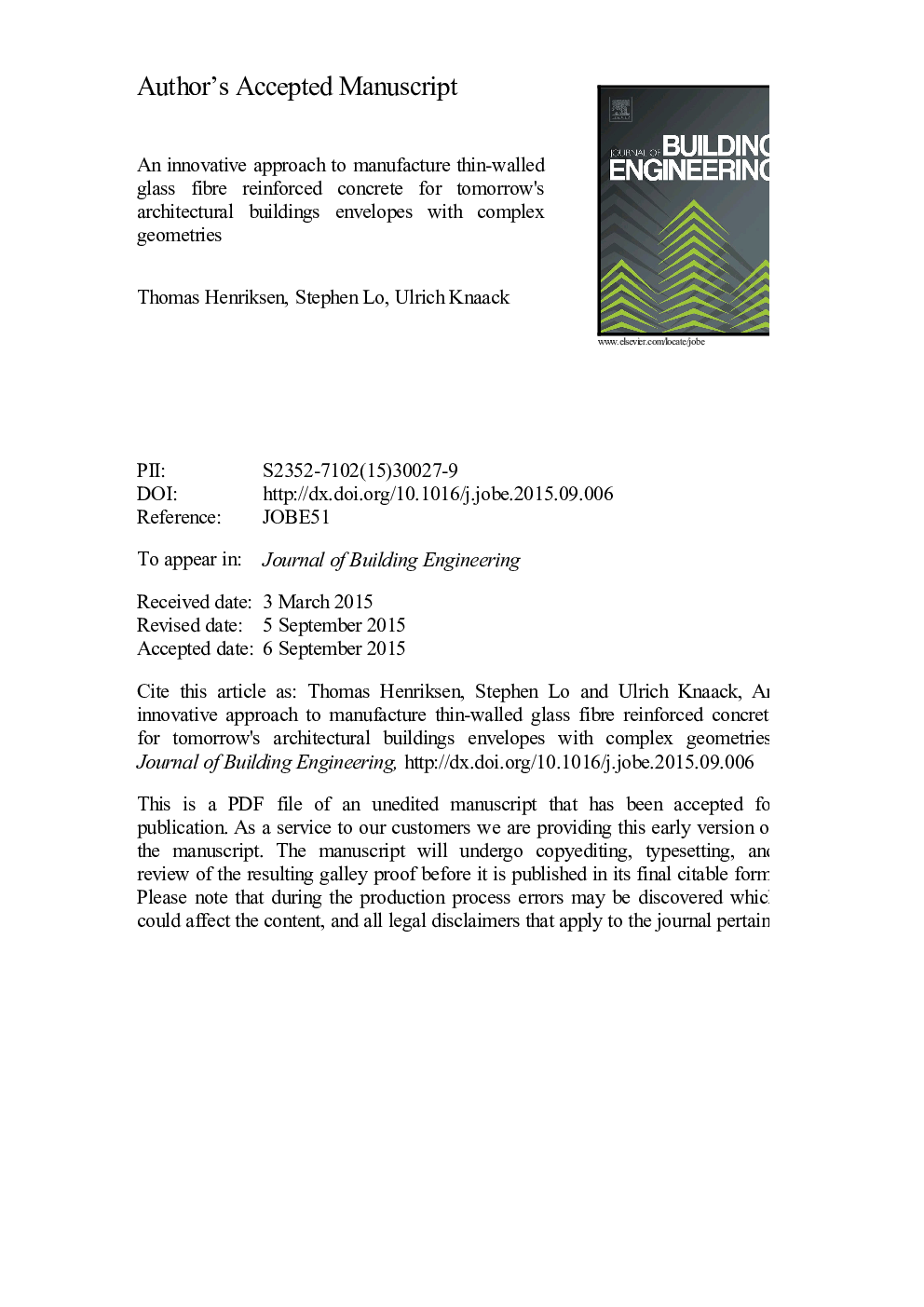| Article ID | Journal | Published Year | Pages | File Type |
|---|---|---|---|---|
| 6750225 | Journal of Building Engineering | 2015 | 24 Pages |
Abstract
Glass fibre reinforced concrete (GFRC) elements have become a sought after cladding material since their introduction as rain screen cladding for buildings. To advance GFRC for a range of complex geometry building envelopes this also requires advances in existing moulding techniques for thin-walled GFRC elements. To do so it is necessary to define the current state of thin-walled GFRC elements and the constraints and limits placed on them by existing production techniques. This paper identifies the current architectural and aesthetic requirements of thin-walled GFRC elements and maps their range of complexity, from 1-D to 3-D, to the limits of the most appropriate production method. This will inform guidelines for the future design development of thin-walled GFRC and enable an innovative approach to further advance the moulding techniques for thin walled GFRC elements for a variety of complex geometry building envelopes. The paper concludes on which further steps need to be taken to advance thin-walled glass fibre reinforced concrete for tomorrow's architectural buildings envelopes with complex geometries.
Keywords
Related Topics
Physical Sciences and Engineering
Engineering
Civil and Structural Engineering
Authors
Thomas Henriksen, Stephen Lo, Ulrich Knaack,
